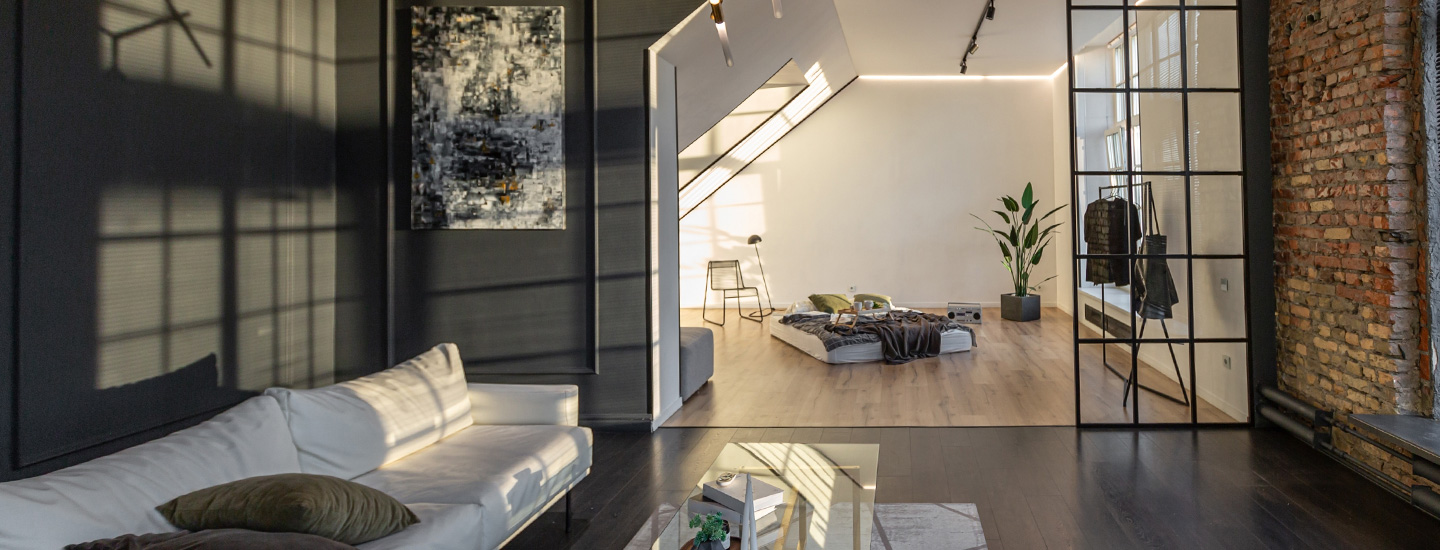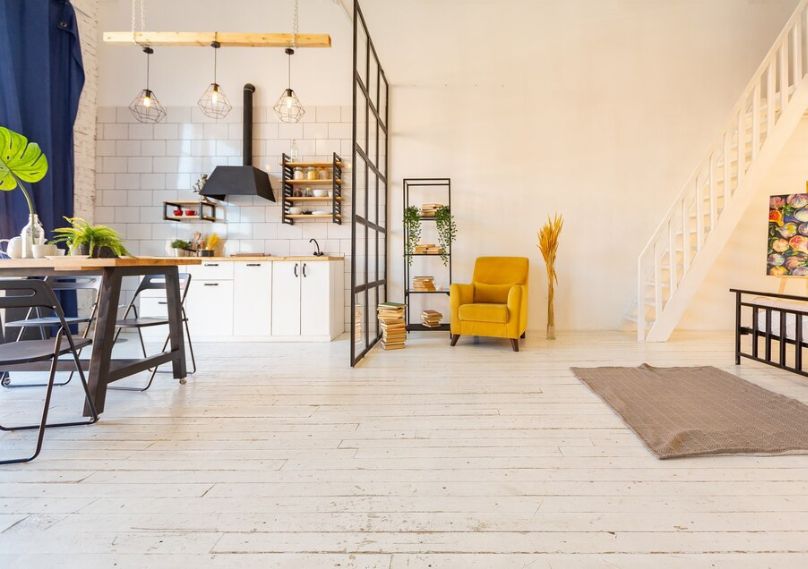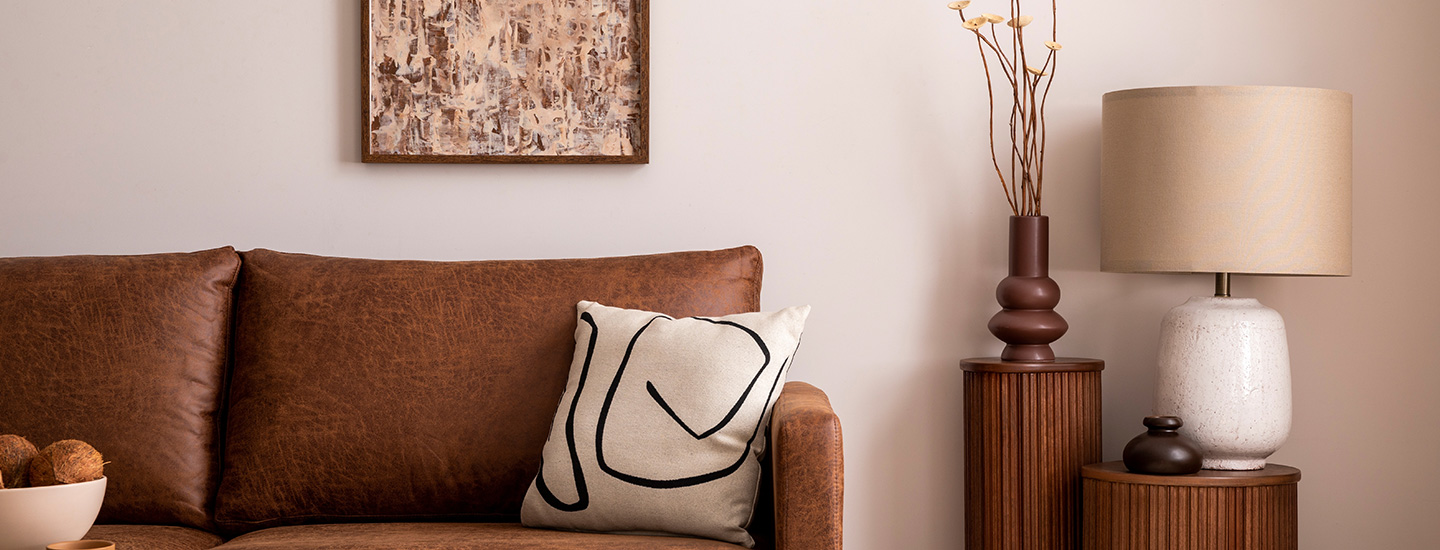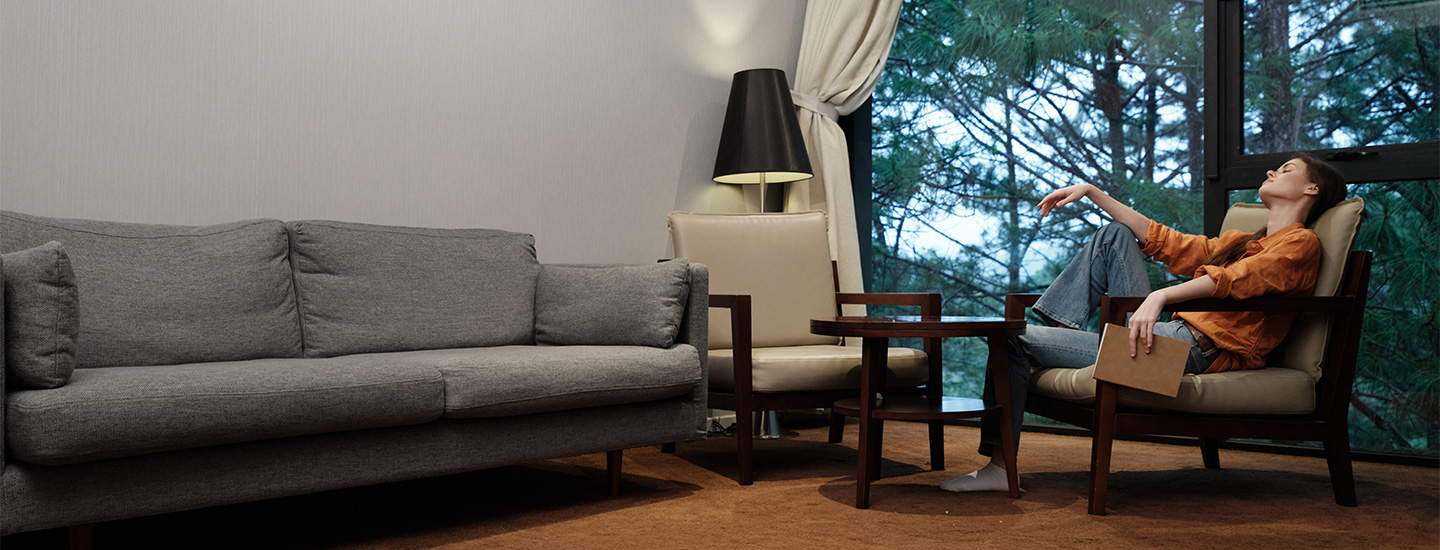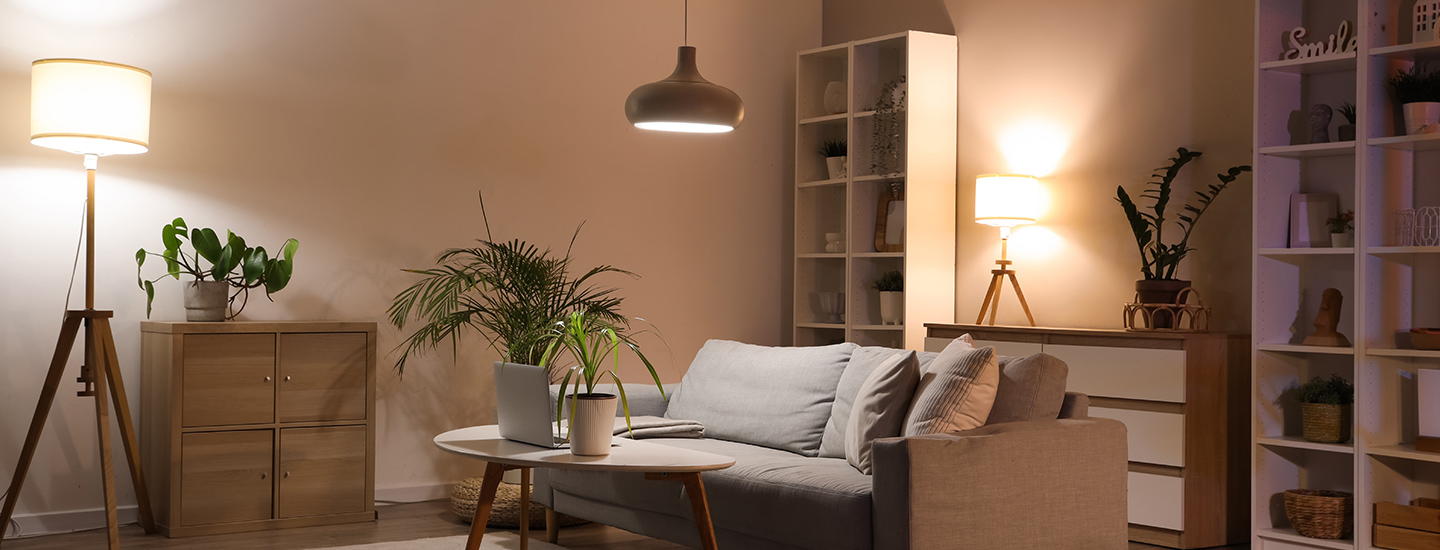Picture yourself walking into an old haveli in Rajasthan, where on every wall there are intricate jharokhas attached, with rich, hand-woven rugs taking up the floor. It is a cool, smooth marble under your feet, somewhat rough to the touch; the sandstone walls, one next to another, are rough-hewn while the silk pillows are extremely soft—the texturality is effective in the construction of a space. This is the power of texture in interior design, something that architects through every period have wielded to impart warmth and character into a space.
In India, where our architecture stands as diversified as our culture, texture in design always enjoyed pride of place. From the intricately carved wooden pillars of South Indian temples to the highly polished granite floors of Mughal palaces, every surface whisper-tells a story. It has to be not just what we see, but what we can feel—the rough texture of a clay pot set against the smoothness of a brass lamp or the tactile quality of a dhurrie rug imbuing a room with warmth.
But texture isn’t just for the past. In today’s homes, it’s what turns a flat, lifeless space into a dynamic, engaging environment. It makes what is modern in a Bengaluru apartment cozy and what is minimal in a Mumbai flat luxurious. Textures do way more than what the eye grasps: it actually drags one’s touch into exploring and feeling the space around him or her, may it be on fabrics, finishes, or even natural material. In this blog post, you will understand how to leverage the power of texture in interior design to create an overall richness of layers and the right amount of personal space.
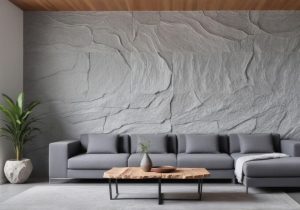
Let’s first grasp what texture is concerning interior design. It is the surface quality of a material-how it feels to the touch and its appearance to the eye. It could be smooth, rough, glossy, or matte in quality, and it defines a lot in the sensation of the room.
Visual Texture: This refers to the physical appearance of a surface. An example is the marble print in a wallpaper; though it may look smooth, it is the visual effect of such a pattern that creates the feel of texture in interior design.
Tactile Texture: This actually refers to the feel of the surface. Some perfect examples include a rough brick wall, a velvety soft cushion, or a rugged jute rug—one literally feels the tactility of texture.
Without ever knowing it, the tactile texture had always played an integral part in Indian homes—be it the raw, unfinished walls of a traditional mud house, or the cool, smooth surfaces of Kota stone floors. These textures are not just decoration or style factors; they are integral to one’s culture, binding the generations with the earth and the centuries-old traditions of craftsmanship.
Contrasts and interest in texture make a room feel deeper. A rough, woven table runner placed over the top of a smooth, polished table provides contrasts the eye finds pleasing and layers in the design. It also adds warmth and character to space, making it feel more lived-in and welcoming.
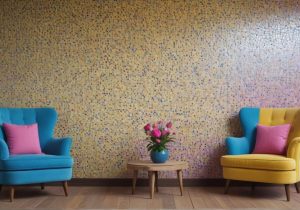
Fabrics and textiles are one of the simplest and best approaches to use texture in interior design in a house; and we are fortunate here in India to have some form of rich cultural tradition about textile crafts. Right from the luxurious silks of Varanasi to the rustic charm of handwoven Khadi, we have a pretty varied and rich history of textile.
Silk and Velvet: Luxurious; perfect for transforming a space into a rich, full atmosphere. On curtains, cushions, or upholstery, it brings a soft, tactile element to your space.
Cotton and Linen: These fabrics come straight from nature, so they totally work to create a light and airy atmosphere. They will work perfectly in your summer homes or where you want to evoke that feel of freshness and simplicity.
Jute and Khadi: To ensure that more rural, earthy atmosphere jute rugs or khadi cushions add, with it also a rugged, natural texture that is sustainable and chic.
Think about the traditional Indian home, which uses textiles—not just to provide comfort, but to tell stories. Vibrant Rajasthani block prints on bedspreads or intricate embroidery on a Kashmiri shawl draped over a sofa add layer upon layer of history and culture to a room.
Layering—Mix and match various textures by using smooth silk cushions with a rougher woven throw, creating dimension and interest.
Contrast—Create focal points with contrasting textures. The softness of a smooth plush carpet under a wooden coffee table or a jute runner over a polished dining table can really make the textures pop.
Walls and floors are big, uninterrupted surfaces that present an ideal canvas for bringing texture in interior design into your home. Different materials, finishes, and treatments give you room to play around and can change the mood and feel in a room drastically.
Stone and Brick: Showcasing exposed brick walls or cladding the walls with stone will infuse the design with a timeless yet contemporary rustic and earthy texture. This option is recommended for creating an accent in the living room or bedroom. Wood Paneling: This will add warmth and establish a very organic look in your place. Wood paneling, be it smooth and glossy or rough and raw, brings in a type of texture that softens and elevates the room.
Textured Paint: The texture in interior design of paint does not only define the color. Textured finishes or materials of this element, such as stucco or lime wash, add interest to what would be an otherwise flat wall.
Tiles and Stone: Cool, tactile flooring, such as terracotta tiles, granite, and marble, is common in traditional Indian homes. Such materials add a touch sensation on top of looking good under your feet.
Rugs and Carpets: Layering of rugs shows the textured work below. For example, place a soft wool rug over a jute mat for visual and textural contrast.
Think of the fretted screens of square lattice worked into Indian palaces or the raised relief patterns on ancient temples. These historical elements are not solely about decoration—they’re about creating an experience that engages the senses.
Textured Feature Walls: Introduce textures on one wall as a feature arrangement. Whether it’s a stone wall in your living room or wood paneling in your bedroom, this technique adds dimension without overwhelming the space.
Mix and Match: Don’t shy away from mixing textures on walls and floors. Combining a smooth plaster finish with rustic stone or glossy tiles with matte wood can be very dynamic and interesting.
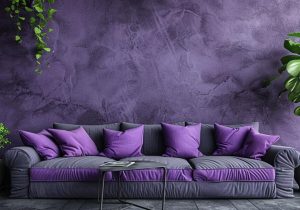
Nature is one of the richest resources for texture in interior design; it follows that organic, natural elements will add depth and interest to your space.
Wood, in its raw or polished form, introduces warmth and texture. This may be brought in through furniture, floors, or as cladding on some walls to introduce a very sympathetic, natural element. Stone From smooth polished granite countertops to roughly chipped sandstone walls, stone surfaces of any type bring grounding organic texture that connects your home to the earth.
Plants: The variety of textures—ideas range from a smooth rubber plant to fuzzy lamb’s ear—adds soft, natural touches to any of your interiors.
Indian architecture has always been based on natural materials—for instance, the cool stone flooring in an ancient fort or the hand-carved wooden doors of homes which are not only novel but are functional and sustainable and reflect the culture of our past.
Bring the Outdoors In: Indoor plants, wooden furniture, or stone countertops will bring natural texture in interior design into your home. This material will not introduce texture, but in general, indoors, it enhances the sense of well-being your home holds. Texture Through Art: In your artwork, you may want to consider the use of natural material. Anything from a wall hanging to a sculpture that you can do from driftwood or stone truly introduces a tactile and visual aspect into your room.
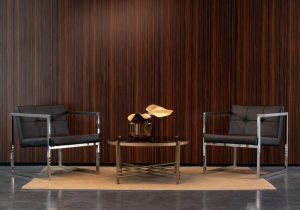
As much as texture can bring some depth, it’s essential to strike a balance between the right colours and patterns with this texture to avoid a space that lacks harmony. Too much texture can be overwhelming, while too little of it leaves a flat feel to a space.
Colour: Resort to colour and use it to enhance and complement the textures in your space. For example, a more subdued palette will foreground texture, while colourful or bold hues give more energy and contrast. Pattern: The patterns may go with or against the textures. For example, on something smooth like a sofa, a geometric pattern is interesting. Subtle, organic patterns bring life to materials like wood and stone by showing off their natural texture in interior design .
Cultural Reference: Colour and texture are often paired in traditional Indian design. A richly textured Rajasthani textile is matched by its vivid colours of bright hues, while the smooth, polished surfaces of Mughal architecture often have the contrast of intricate patterns in bright colours.
Layering: Layering textures with complementary colors and patterns creates a rich, multi-dimensional space. For example, a neutral tone textured rug can be balanced by a bold, patterned cushion to add visual and tactile interest. Contrast: Apply contrasting texture and color to draw focal interest. Rough, textured walls in some soft, muted color scheme can present a fine backdrop to some bold, colorful art piece.
Texture: The Transformative Power of Interior Design With texture in interior design comes the unsung hero of interior design. This is what turns any house into a warm, layered, deep, personal home. We at Bonito Designs understand its transformational potential and are here to help you bring texture into your home in a beautiful yet meaningful way.
Customised Designs: Be it the rustic charm of natural materials or sleek sophistication of modern finishes, our bespoke designs will work to give you a space that will reflect your personal style while keeping in mind the living experience.
Quality Materials: Only top-grade materials so that every texture in interior design at home feels as good as it looks. From luxurious silks to rugged stone, we bring the best of the world into your interiors.
Professional Expertise: With a firm grounding in how texture balances with colour, pattern, and form, one of our designers creates visually stunning environments to be in.
Hassle-Free Experience: At Bonito Designs, we look after every detail from concept to completion so that you can enjoy the process of transforming your home without any hassle.
Ready to add a little texture into your life? Contact us today and let’s start creating a home that’s rich, layered, and full of life.
It adds dimension and visual interest to space. Texture engages the senses and may dramatically shift the mood of a room, making it much more dynamic and interesting.
Start with smaller features like textiles and accessories, then work your way up to textured walls or furniture. Naturally, this balance of textured elements should be paired with smooth walls and neutral colours, lest one feels overwhelmed with the flood of textures in a single space.
Common examples include handwoven textiles, natural wood, stone, and metals such as brass. These not only bring along a myriad of cultures but also add tactile richness to a space.
Textured elements, like plush rugs, soft fabrics, and natural wood, will warm up the place. Then, it will be more welcoming and will add to the coziness and comfort of the atmosphere.
Bonito Designs offers you customization with quality and the perfect balance of texture, color, and pattern. This firm has an experienced team of highly qualified and creative people who always end up creating spaces that are not only beautiful but also functional.
